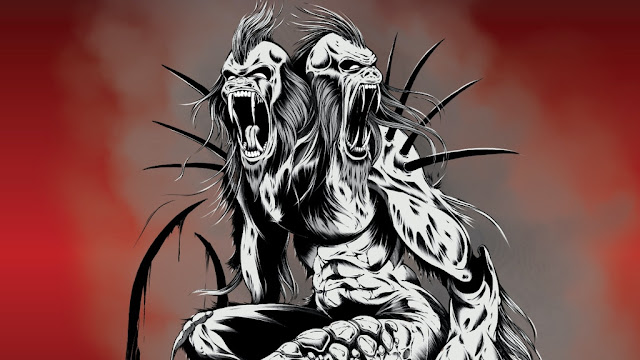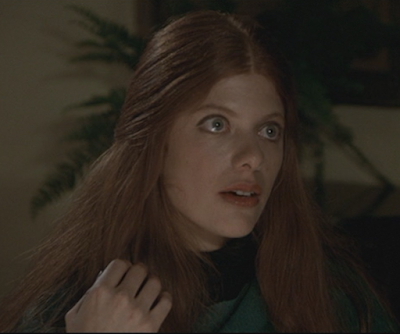Pawsome Action!
 The Ages of Man have long since passed and the Old Ones are no more. They bequeathed the world and their relics to the ones that they worshipped, rather than the ones that served them. Thus to the Cats rather than the Dogs. Where the Dogs have the one kingdom, that of Pugmire, the cats have six fractious Monarchies, scheming and plotting to outdo each other. The Cats of these Monarchies sent explorers hither and thither, often looking for the Relics left behind by Man, even over the mountains to the north—though none go there today, and once the means to sail the Acid Sea was discovered, over the horizon. Trade would flourish initially between the Monarchies via House Korat and the Kingdom of Pugmire, but differences led to the relationship breaking down and war being declared. The War of Dogs and Cats could not be fought effectively, thus Trillani Persian von Mau convinced the six Monarchies to come together, sign a Treaty of Unification, and become six dynasties governed by a Ruling Council with Trillani elected as Monarch. Thus the Monarchies of Mau was formed. The Kingdom of Pugmire is its greatest rival, but despite the many differences between the two kingdoms and Cats and Dogs, there is peace. The war ended in stalemate, with Waterdog Port, the source of the initial dispute ending up a neutral city. The Monarchies of Mau still faces enemies from without and from within. Badgers raid and plunder, and monsters of all sorts are constant danger, the worst being the demons and the Unseen that threaten the existence of Cats—even impersonating them, whilst the individual Monarchies still attempt to learn each other’s secrets, and the Cult of Labo Tor, consisting of fanatical Rats and Mice—who otherwise live peacefully in the gaps between Cat society—steal the artefacts of Man to study and so discover the path through the Maze of Ignorance and so become like Man. In response to these dangers, to learn more about the world, and to foster co-operation and learning between the six Monarchies, Trillani’s Trailblazers was formed. Teams made up of Cats from all six Monarchies as well as from the unaffiliated Cats of the Shadow Bloc serve in Trillani’s Trailblazers.
The Ages of Man have long since passed and the Old Ones are no more. They bequeathed the world and their relics to the ones that they worshipped, rather than the ones that served them. Thus to the Cats rather than the Dogs. Where the Dogs have the one kingdom, that of Pugmire, the cats have six fractious Monarchies, scheming and plotting to outdo each other. The Cats of these Monarchies sent explorers hither and thither, often looking for the Relics left behind by Man, even over the mountains to the north—though none go there today, and once the means to sail the Acid Sea was discovered, over the horizon. Trade would flourish initially between the Monarchies via House Korat and the Kingdom of Pugmire, but differences led to the relationship breaking down and war being declared. The War of Dogs and Cats could not be fought effectively, thus Trillani Persian von Mau convinced the six Monarchies to come together, sign a Treaty of Unification, and become six dynasties governed by a Ruling Council with Trillani elected as Monarch. Thus the Monarchies of Mau was formed. The Kingdom of Pugmire is its greatest rival, but despite the many differences between the two kingdoms and Cats and Dogs, there is peace. The war ended in stalemate, with Waterdog Port, the source of the initial dispute ending up a neutral city. The Monarchies of Mau still faces enemies from without and from within. Badgers raid and plunder, and monsters of all sorts are constant danger, the worst being the demons and the Unseen that threaten the existence of Cats—even impersonating them, whilst the individual Monarchies still attempt to learn each other’s secrets, and the Cult of Labo Tor, consisting of fanatical Rats and Mice—who otherwise live peacefully in the gaps between Cat society—steal the artefacts of Man to study and so discover the path through the Maze of Ignorance and so become like Man. In response to these dangers, to learn more about the world, and to foster co-operation and learning between the six Monarchies, Trillani’s Trailblazers was formed. Teams made up of Cats from all six Monarchies as well as from the unaffiliated Cats of the Shadow Bloc serve in Trillani’s Trailblazers.The Cats of the six Monarchies of Mau are all different. House Angora is one of scholars and intellectuals, House Cymric of diplomats and negotiators, House Korat of soldiers and tacticians, House Mau of leaders and judges, House Rex of explorers and outsiders, and House Siberian of traditionalists and medics. All of these Houses have held a monarchy before Unification, but there are still many minor Houses, organisations, rebels, and outsiders who have a voice in the kingdom, and they are represented by the Shadow Bloc. However, all Cats of the Monarchies of Mau are the same. They value privacy and secrecy, they commonly believe in reincarnation and are by nature spiritual, and they fear and have a common enemy in the evil that is the Unseen. They also adhere to the Precepts of Mau—Always trust our instincts, always reward loyalty, always respect an honest duel, and always pounce upon minions of the Unseen. Without these tenets, the Cats of the Monarchies of Mau are no longer worthy of the adoration of Man.
This is the setting for Monarchies of Mau, the feline sequel and companion roleplaying game to Pugmire. Published by Onyx Path Publishing following a successful Kickstarter campaign, Monarchies of Mau, like Pugmire before it, employs the Open Game Licence for Dungeons & Dragons, Fifth Edition. This makes Monarchies of Mau easy to pick up and play, which should be no surprise given the delightful accessibility of Dungeons & Dragons, Fifth Edition. Like Pugmire, it presents a streamlined version of the rules, takes Player Characters from First to Tenth Level, and it can also be played in tandem with Pugmire, so that group could play an all-Cat game, all-Dog game, or a game of Cats and Dogs.
Cats in Monarchies of Mau have a Calling, a House, and a Background. A Calling is what a Cat does and is the equivalent of a Class. Six are given—the charismatic Champions (Fighters), intelligent Footpads (Rogues), wise and intelligent Mancers (Wizards), charismatic and enduring Ministers (Clerics), wise and enduring Trackers (Rangers) who hunt the Unseen, and strong and dextrous Wanderers (Monks). Now these Classes are not the exact equivalent of those in Dungeons & Dragons, Fifth Edition, for example, Mancers do cast necromantic spells and Ministers are almost bardic in their means of spellcasting. Unlike the Dogs of Pugmire, the Cats of do not have a Breed as such, but rather the vocations of the six Houses. This neatly avoids Monarchies of Mau having to detail each and every contemporary breed and also establishes the various noble families within the kingdom. A Background is what a Cat did before becoming a hero and answering his Calling. Just eight are given, ranging from Common Folk and Criminal to Scholar and Soldier. Lastly, a Cat will have an Ideal, a Mystery, and a Flaw.
A Cat’s Calling will provide him with a view on the other Callings, on the Precepts of Mau—each Calling favours a different part of the Precepts, his Stamina Points, skills, and rucksack (equipment), plus his first Secrets. The latter are of course, a Cat’s special abilities and powers and are akin to the proficiencies or feats of Dungeons & Dragons. Another Secret and an ability bonus will come from a Cat’s House, and then more rucksack contents and skills from his Background. Six examples of each Calling are given as well as six possible Unusual Circumstances by which a Cat gained a particular item in his rucksack.
Creating a Cat involves selecting a Calling, a House, and a Background, plus skills and Secrets. Mancers and Ministers also have spells. Unlike in other roleplaying games, the core abilities are not rolled for, but assigned from a given set of values. The creation process is generally straightforward and a player is nicely guided through the process, step-by-step. One noticeable absence is that of Alignment, instead replaced by how each Calling favours a different Precept, but without laying too heavy a paw on the player’s shoulder.
Our sample character is Philomena von Angora, a Mancer who after completing her training continued conducting research in her House’s extensive libraries. Recently she was assigned to shepherd a visiting researcher from the Shadow Bloc, a Minister named Winifred von Forest. Together they conducted extensive examination of the ancient papers and they became friends, and then Philomena found herself falling in love with her. Before she could express her feelings, Winifred disappeared and nobody seemed to recall that she had been at the library. All was that left was the bone focus which Winifred von Forest said belonged to her father. With her friend missing, Philomena has left the library and joined Trillani’s Trailblazers.
Philomena von AngoraLevel 1
Calling: Mancer
House: Angora
Background: Scholar
Proficiency Bonus: +2
Stamina dice: d6
Stamina Points: 6
Defence: 12
Initiative: +1
Speed: 30
Abilities: Strength -1 (08), Dexterity +1 (12), Intelligence +3 (17), Wisdom +2 (14), Constitution +0 (10), Charisma +1 (13)
Skills: Know Arcana, Know History, Know Spirituality, Search, Sense Motive
Secrets: House Secrets (Angora), Light Armour Aptitude, Mancy, Simple Weapons Aptitude, Voracious Learner
Spells: Chill, Eldritch Blast, Feather Fall, Prestidigitation, Unnatural Rebuke
Rucksack: Spear (1d8), padded light armour, Bone Focus (Borrowed from a friend who disappeared), common clothes, bottle of ink, ink pen, parchment, small collection of books, belt pouch with plastic coins
Ideal: …Studying the Unseen
Bond: …My love for a Cat of another House.
Flaw: …Return the item I know not be in my possession.
Given its Dungeons & Dragons-derived mechanics, it should be no surprise that Monarchies of Mau is a Class and Level system. Unlike Dungeons & Dragons, the Levels only go up to Tenth Level, at which point a Cat is considered to have Grey Fur and cannot advance any further, although he can still go adventuring. Unlike Dungeons & Dragons, a Cat who goes adventuring in Monarchies of Mau does not earn Experience Points, but is awarded a new Level after a few good stories and when the Guide—as the Game Master is known in Monarchies of Mau—decides is appropriate. When he does go up a Level, a Cat gains both Stamina and Stamina dice, spellcasters—Mancers and Ministers gain more spells and spell slots, and at every other Level, a Cat’s Proficiency Bonus increases. Every Level, a Cat gains an Improvement, which can be to improve an Ability score, select a new Aptitude or House Secret, or to refine a Secret the Cat already possesses. For example, a Champion can refine his Honour Challenge Secret, which enables him to force an opponent to engage in an honour duel, by using both Charisma and Strength rather than just Charisma to force the associated Saving Throw or allowing an opponent to decline and take a penalty to his Saving Throws. These tweaks and refinements give Monarchies of Mau a sense of the cinematic and heroic action as well as providing some variability in terms of Cat design.
Mechanically, Monarchies of Mau looks much like Dungeons & Dragons, Fifth Edition, but on a closer look, there are tweaks and refinements to the rules too. The most feline of tweaks is the Pouncing rule. When a Cat takes the Ready action and studies a situation, his player rolls the resulting action with Advantage! Perhaps the most notable addition is that of Fortune and the Fortune Bowl. A session begins with the Cats in an adventuring party having two Fortune in the Fortune Bowl. A player can earn more Fortune for the Bowl by roleplaying to his Cat’s personality traits in a way that makes the game interesting, by being an entertaining player, coming up with a good plan, and by playing to his Cat’s instincts. Much of this is up to the discretion of the Guide, but a player can force the Guide to add Fortune to the Bowl by having his Cat intentionally fail. However, where in Pugmire any Fortune Points acquired by a Dog are automatically added to the shared Fortune Bowl, in Monarchies of Mau, a Cat can favour himself rather than the group and keep it in his own Fortune Pile. Fortune in the Bowl can be spent—and this is a permanent spend—to gain a reroll on any dice roll and keep the higher result, to allow a spellcaster to cast a spell if he has run out of spell slots, and to interrupt the initiative order and take their turn now. Further, some Secrets require Fortune to be activated.
Again, magic in Monarchies of Mau looks like Dungeons & Dragons, but with a tweak or two. In terms of flavour, the magic of Monarchies of Mau has a darker edge, involving the unusual and the unnatural, for example, the Mancer employing necromancy. Mechanically, magic in Monarchies of Mau can go wrong. If a player rolls a botch—a critical failure—on a spellcasting roll for his Cat, intentionally fails a spell to gain Fortune, or an opponent rolls a Triumph—a critical success—on a Saving Throw, then a spell backfires. It is up to the Guide to determines the outcome and effect when this happens. Lastly, besides the Mancer and the Minister, Cats of other Callings can take the Magic Aptitude Secret and thus become a Dabbler, knowing just a handful of spells.
Another major difference between Monarchies of Mau and Pugmire is the way in which Cats and Dogs treat Masterworks, the Relics left behind by Man. They are still divided into ‘Relics’, such as the Boots of Climbing or Chameleon Cloak; ‘Fixes’ like Explosive Eggs or Potions of Haste; and ‘Wonders’, such as the Flame Twig or Picture of Health. Now, just as with Pugmire, the world of Monarchies of Mau is being a post-apocalyptic world, the conceit is that what these items really are, is items of Old-World technology. However, they cannot so easily be mapped back onto our own technology, but then the conceit is not necessarily that important in play. The big difference between Pugmire and the Monarchies of Mau is that Dogs share and even revere Masterworks, whereas Cats study them, attune to them, and they break them in just the right way so that they can absorb the powers they contain. For example, the Charged Collar provides a temporary defence against bludgeoning attacks, but when broken down in the right way and absorbed, the Cat is Resistant to such attacks. Further, when refined, the effects of the absorbed Charged Collar can make a Cat immune to bludgeoning attacks and can even manifest a lightning barrier! This has a number of effects. It both makes Masterworks more powerful and more personal to a Cat, and mechanically it partially offsets the fewer number of Secrets a Cat has versus the number of Tricks a Dog has in Pugmire. The combination of this is drive a player and his Cat to explore the ruins of the Monarchies of Mau and beyond in search of the Masterworks, providing a base motivation in addition to those born of a Cat’s Ideal, Motivation, and Flaw. However, the Masterworks section is quite small and is very likely going to be exhausted relatively quickly.
The setting for Monarchies of Mau is explored in some detail, explaining Cats and their Houses, culture, technology, and more in some detail, as well as their enemies and rivals. It also looks at the Ruling Council as well as Trillani’s Trailblazers, the organisation which by default the Player Characters are expected to join and thus adventure. Notably, it takes the reader inside the Lounges where Cats of all stripes gather over mugs of catnip tea and saucers of milk close by the fire, whilst Rats and Mice stick to the shadows of the corners. Whilst various locations in both the lands of the six Dynasties and beyond the Monarchies of Mau are described as well, there is plenty of room for the Guide to add her own setting material. Some of the secrets of the setting are explained here and also in the chapter for the Guide, which is well written and includes suggestions for running Monarchies of Mau and Pugmire together—and even for adapting the setting to other rules systems!
In addition to the advice and further examination of the setting, the Guide is provided with a decently sized Bestiary, covering Animals, Bandits, Cats, Dogs, Badgers, Rodents, and more. That more includes monsters and the Demons of the Unseen, and some of these are nasty indeed. For example, the Breathtaker steals into camps at night and steals the breath of Cats, Bone Burrs are insect-infested skulls which attack Cats, and Witch Demons possess Cats and has the power to reflect or even absorb the spells of Mancers and Ministers! Lastly, Monarchies of Mau includes an introductory adventure, ‘All Hail the Rat King!’, in which the Player Characters are sent to investigate a sudden wave of Rat immigration in the town of Strudniksburg. Designed for First Level Player Characters, it can be played using the players’ own or the six pre-generated characters given as examples at the beginning of the book.
Physically, Monarchies of Mau is, like Pugmire, a lovely book. Again, it is full colour and illustrated with some fantastic artwork. In keeping with the darker tone of the setting, the artwork also has a darker feel to it. The book is also well written and like Pugmire, commentary is given by a pair of in-game characters. One to provide guidance for those new to Monarchies of Mau, the other to explain how it differs from other roleplaying games.
Pugmire was a roleplaying game about being a ‘Good Dog’ and gaming with a pack, but Monarchies of Mau pulls away from that. There is greater sense of individuality to the Cats in Monarchies of Mau, in terms of roleplaying, the mechanics, and the setting. The Cats are caught between this individuality and the collective need for co-operation. At a personal level, this can be seen in the choice between choosing to add Fortune to his Personal Pile or the group’s Fortune Bowl, but at a national level it can be seen in the necessity of the six Monarchies of Mau to co-operate despite their scheming against each other. This scaling means that Monarchies of Mau can do dungeoneering and exploratory adventures as much as it can inter-House rivalries and politics. There is a darker tone to the roleplaying game too in the monsters the Cats face, and also in the magics, especially the necromantic magics of the Mancer, they employ. There is thus much more of the horror genre to Monarchies of Mau, and that in combination with the darker tone, makes less suitable for a younger audience. These are of course, elements which the Guide can choose to adjust up or down as is her wont.
The darker tone and horror elements of Monarchies of Mau mean that it is not quite suited to being a beginning roleplaying game, despite its Cats being cute, and the individual versus group dynamic may divide a group as much as it sets up some interesting roleplaying choices and dynamics. Monarchies of Mau is not quite as accessible as Pugmire, or necessarily as easy to play, but it does present an entirely different, but still exciting and fun point of view from which to roleplay and explore their shared world.























